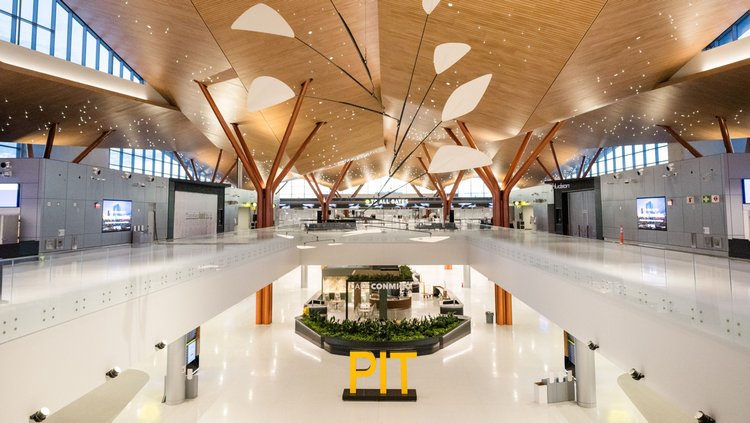
Three decades after three workers lost their lives during construction of the original Pittsburgh International Airport terminal in the early 1990s, the region has become a recognized leader in job-site safety — thanks to deep collaboration between labor unions, contractors, and project owners.
Those past tragedies motivated the Allegheny County Airport Authority (ACAA) to develop a groundbreaking safety strategy for the new $1.7 billion landside terminal project — a program that has now become an example for the construction industry nationwide.

“We wanted to make sure that everybody went home to their families each and every night on this program,” said Paul Hoback, who led the modernization program as ACAA executive vice president and chief development officer. “We had to make sure that in this construction, safety was paramount."
Across four years of construction and more than 5,500 workers participating in the project, Hoback says the results speak for themselves. There have been some serious injuries but no fatalities, and he notes: “Our safety metrics are some of the best in the industry.”
Western Pennsylvania has earned a reputation as one of the safest regions in the country for construction workers, driven by a shared belief that safety benefits everyone — from project owners and contractors to workers and communities.
Bob McCall, director of safety for the Master Builders’ Association, said that collaboration is not something every region has.
“The relationship we have with the building trades here is pretty cooperative and understanding. They know if they can help us get more work, then we’re going to employ more people,” McCall explained. “We’re working together because we have that common goal, where in other areas of the country, it’s adversarial.”
Kevin Kelley, founder of Environmental, Health & Safety Solutions, Inc.® (EHSS®), says owners are a crucial part of that success.
“It’s a three-legged stool, not just labor and a contractor, but the owner — they set the tone,” Kelley explained. “It’s a very cooperative thing because we all have the same goal, which is to get craftsmen and women home safe to their families.”
Construction remains the deadliest major U.S. industry, with 1,075 worker deaths in 2023, including 169 in Pennsylvania, according to the National Safety Council.
OSHA identifies four leading causes of fatalities:
Human factors — such as fatigue and financial stress — make risks even higher, noted Turner Construction safety director Sean Myers.
“Construction workers are around things every moment of their day that could kill them or maim them,” Myers explained. “When you start bringing all these human factors ... some serious incidents can occur.”
Mental health is increasingly a focus for local leaders. Suicide kills five times more construction workers annually than job-site injuries.
“Construction workers have the highest rate of suicide of any other profession,” McCall said. “We lose about 1,000 construction workers every year to job injuries. … But we lose 5,000 construction workers to suicide.”
The local “Yinz Good?” campaign encourages workers to talk to each other and seek support — a small but powerful change on job sites.
.jpg)
Hoback and the ACAA established an owner-led safety program with accountability measures rarely seen in large projects:
“We all have the same goal,” Kelley emphasized — and the airport project shows what’s possible when everyone rows together.
Regional unions are investing heavily in safety education before workers ever reach a job site. Apprenticeships combine classroom instruction with paid field experience — often at no tuition cost.
“We try to get them into the safety culture while they’re in their apprenticeship so that when they become journeymen and foremen, they’ll be able to say what needs to be done,” said Timothy Wisyanski of IBEW Local 5.
Turner Construction’s Myers added that Pittsburgh’s union workforce arrives with strong fundamentals:
“There are a lot of really strong, safety-conscious unions here.”
The success of the airport modernization project — with up to 50 safety professionals onsite at times — highlights Western Pennsylvania’s longstanding cultural shift toward shared accountability.
“That leadership between Paul (Hoback) and Christina (Cassotis, ACAA CEO) really set us up for success,” Myers said.
For a region once troubled by job-site tragedies, the message is clear:
proactive collaboration can save lives, strengthen productivity, and build a more resilient construction workforce.
Originally reported by Christine Zapinski for Jewish Healthcare Foundation in Pittsburg Business Times.